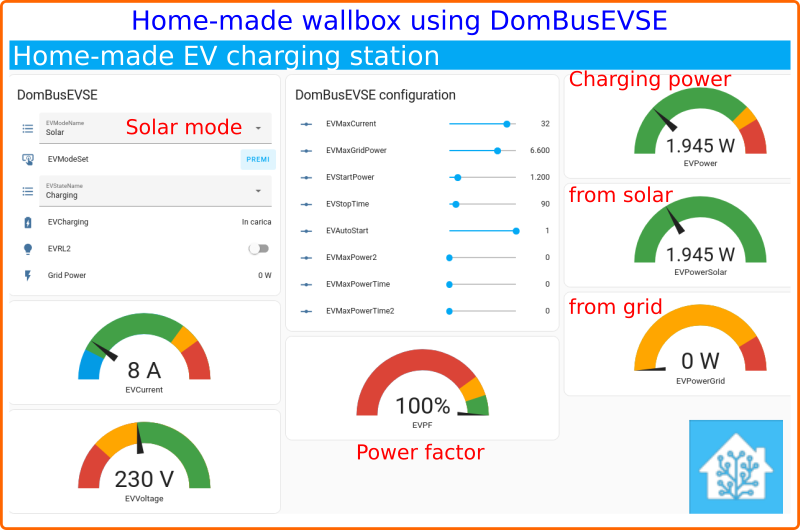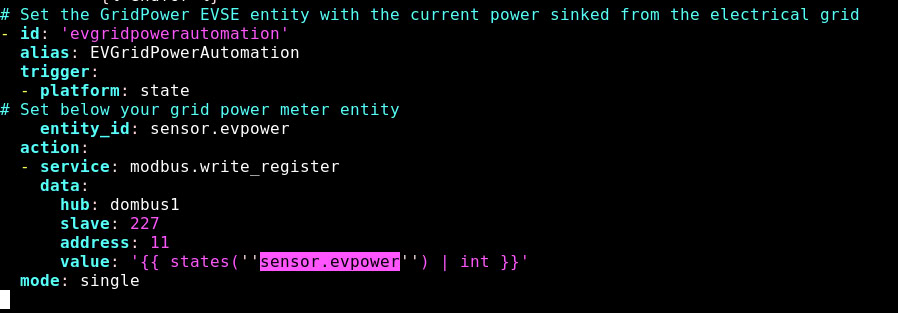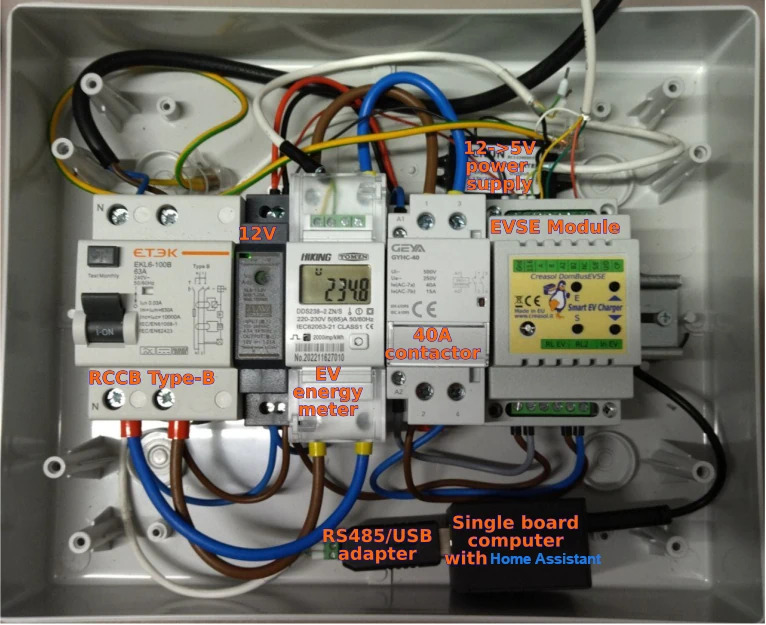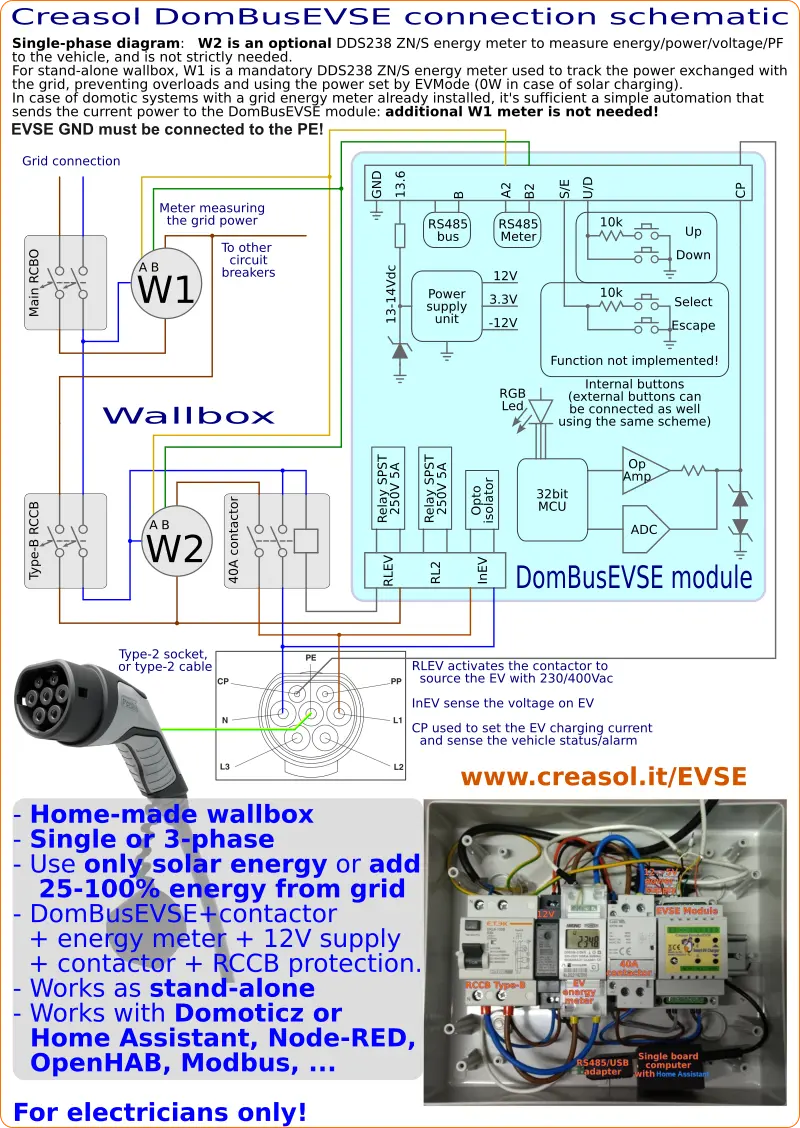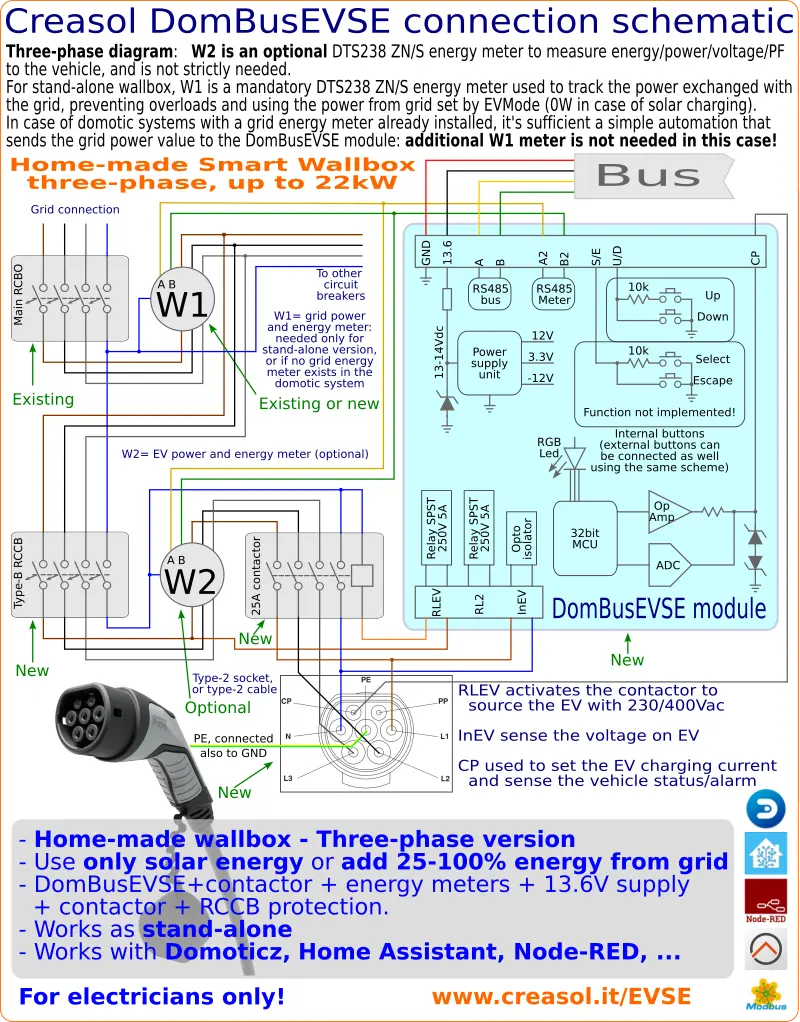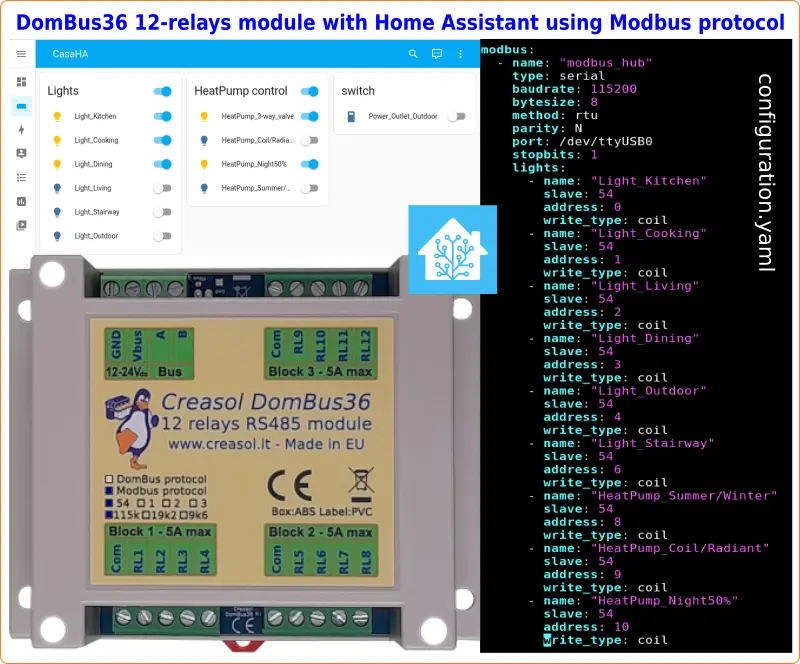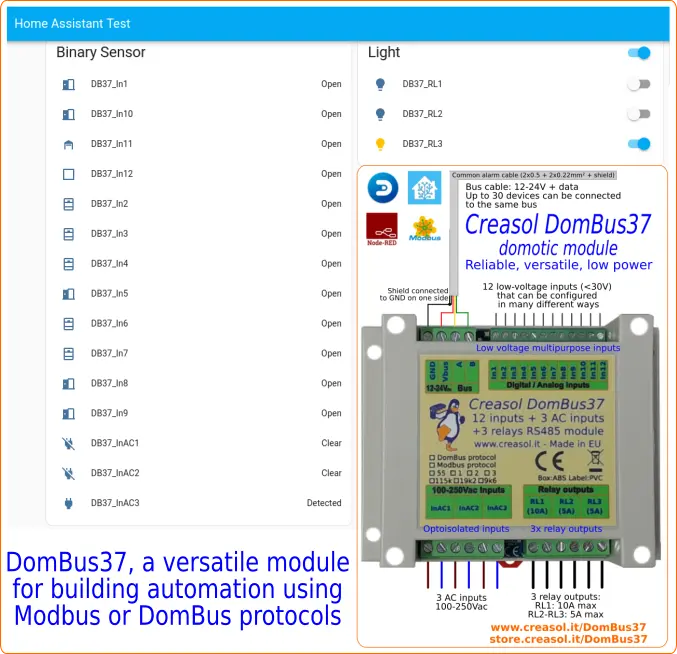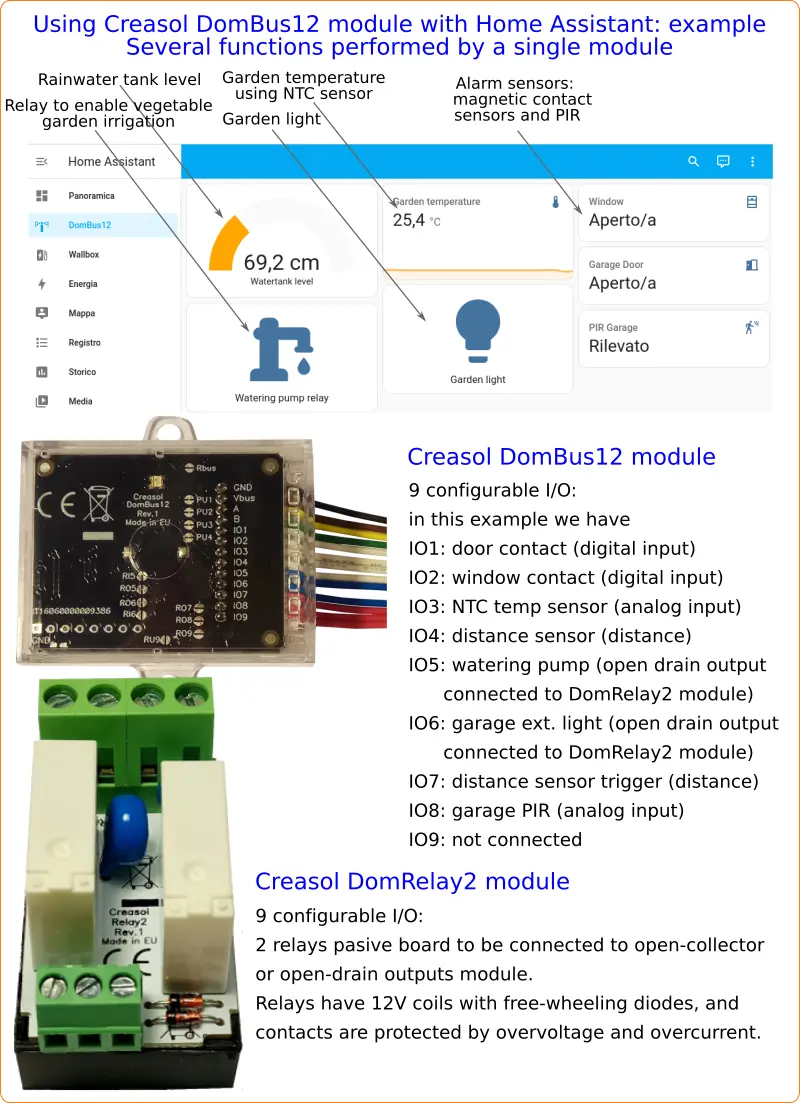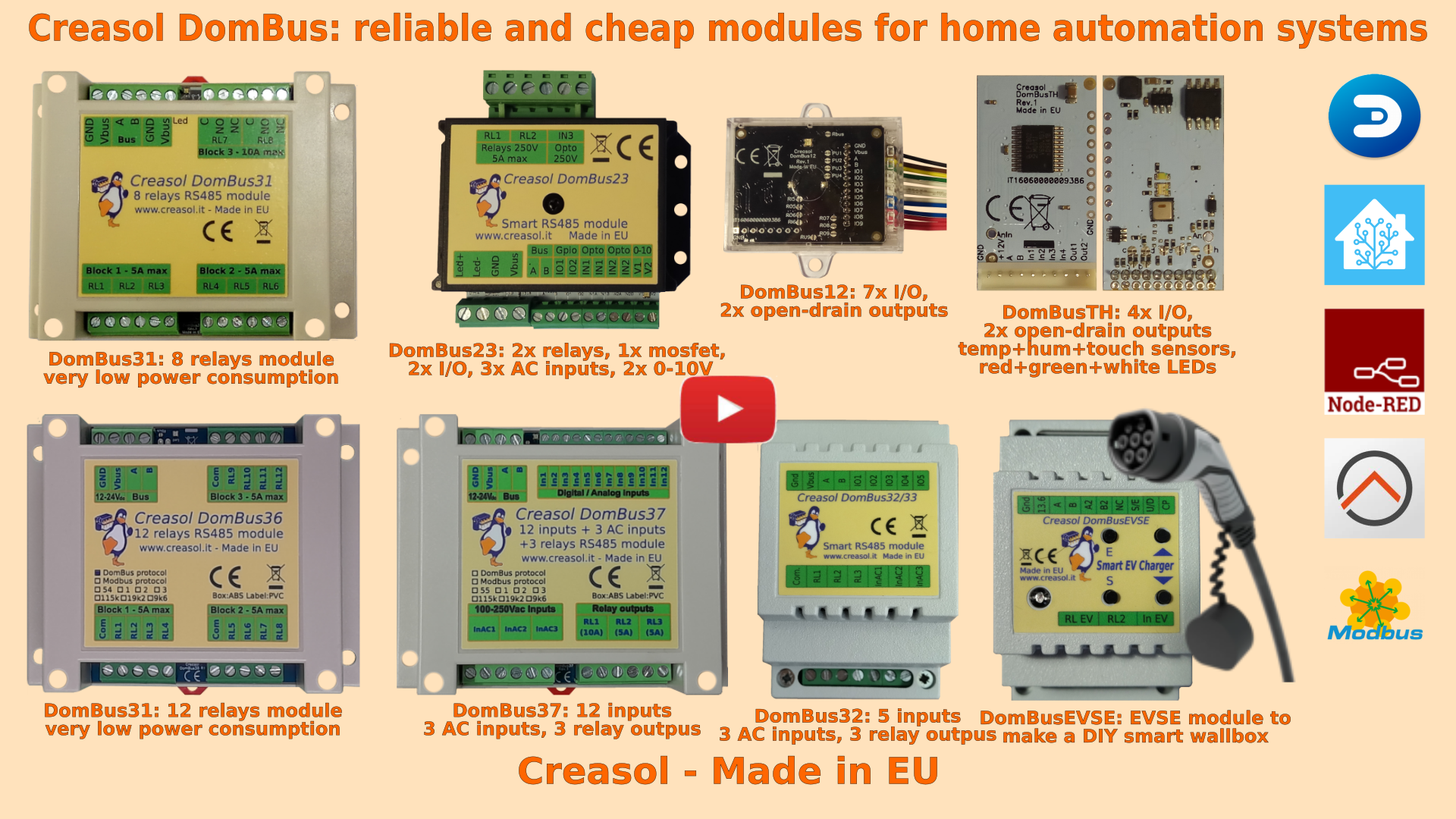DomBus modules can be supplied with two firmwares: please choose Modbus firmware if you intend to use it with Home Assistant.
In this repository, for each module a directory is created within the configuration files to use DomBus modules with Home Assistant.
Files are:
- configuration.yaml that includes dombus1.yaml with all entities for DomBus modules connected to the same bus, and some helpers.
- dombus1.yaml contains the configuration of Modbus #1 (you can have more buses, each for one serial port)
- dombusXXXX.yaml contains entities for specific DomBus modules connected to this bus
Any Modbus RTU bus can store up to 247 modules, but for large domotic networks with 20 or more modules, it's better to divide the network in more buses (one bus for each floor, for example): in this case it's possible to include in configuration.yaml the file dombus2.yaml for bus #2, and so on. Please note that for each entity type there is a included file: in this way it's easier to enable/disable configuration file for each module ( EVSE module, relay modules, ... )
More information on DomBus modules with Home Assistant
Home Assistant configuration files for DomBusEVSE module used to make a DIY smart wallbox charging station
In case that an energy meter to measure the grid power already exists, you don't need to install another energy meter: just use a simple automation to feed the current power from the grid (negative if power is exported to the grid) to the EVSE module, as shown in the following picture (check file dombus/dombusevse/dombusevse_automations.yaml)
More information in the web pages:
DomBus36 is a high efficiency module with 12 relay outputs, grouped in 3 groups to have an easier wiring: each group share the same common, so you don't need to make jumpers to connect the common wire (Line, Neutral, Ground or +12/24V) to all relays.
Relays are protected from overvoltage and overcurrent, and module has a very low power consumption: less than 15mW with all relays OFF, and less than 750mW when all 12 relays are ON. Can you compare this power consumption with other modules in the market?
DomBus37 is a versatile module integrating inputs, AC inputs (to sense 230V presence) and relay outputs.
In the application note below the simplest configuration with Home Assistant.
DomBus12 is a compact and cost effective module with 9 I/Os. Each I/O can be configured as button, switch, double-pushbutton (UP/DOWN pushbutton connected to a single port), counter, meter, NTC temperature sensor, distance sensor, buzzer, led, ...
Below an application example.
Our industrial and home automation modules are designed to be
- very low power (around 10mW with relays OFF)
- reliable (no disconnections)
- bus connected (no radiofrequency interference, no battery to replace).
Modules are available in two version:
- with DomBus proprietary protocol, working with Domoticz only
- with Modbus standard protocol, working with Home Assistant, OpenHAB, Node-RED
Store website - Information website

- Single-phase and three-phases, up to 36A (8kW or 22kW)
- Needs external contactor, RCCB (protection) and EV cable
- Optional power meter to measure charging power, energy, voltage and power factor
- Optional power meter to measure the power usage from the grid (not needed if already exists)
- Two max grid power thresholds can be programmed: for example, in Italy who have 6kW contractual power can drain from the grid Max (6* 1.27)=7.6kW for max 90 minutes followed by (6* 1.1)=6.6kW for another 90 minutes. The module can use ALL available power when programmed to charge at 100%.
- Works without the domotic controller (stand-alone mode), and can also work with charging current set by the domotic controller (managed mode)
DomBusTH - Compact board to be placed on a blank cover, with temperature and humidity sensor and RGW LEDs
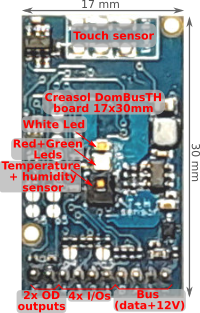
Includes:
- temperature and relative humidity sensor
- red, green and white LEDs
- 4 I/Os configurable as analog or digital inputs, pushbuttons, counters (water, gas, S0 energy, ...), NTC temperature and ultrasonic distance sensors
- 2 ports are configured by default as open-drain output and can drive up to 200mA led strip (with dimming function) or can be connected to the external module DomRelay2 to control 2 relays; they can also be configured as analog/digital inputs, pushbuttons and distance sensors.
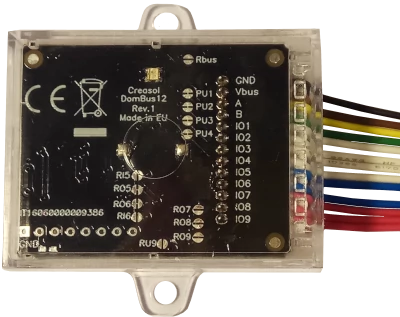
- analog/digital inputs
- pushbutton and UP/DOWN pushbutton
- counters (water, gas, S0 energy, ...)
- NTC temperature and ultrasonic distance sensors
- 2 ports are configured by default as open-drain output and can drive up to 200mA led strip (with dimming function) or can be connected to the external module DomRelay2 to control 2 relays.

- 2x relays SPST 5A
- 1x 10A 30V mosfet (led stripe dimming)
- 2x 0-10V analog output: each one can be configured as open-drain output to control external relay
- 2x I/O lines, configurable as analog/digital inputs, temperature/distance sensor, counter, ...
- 2x low voltage AC/DC opto-isolated inputs, 9-40V
- 1x 230V AC opto-isolated input
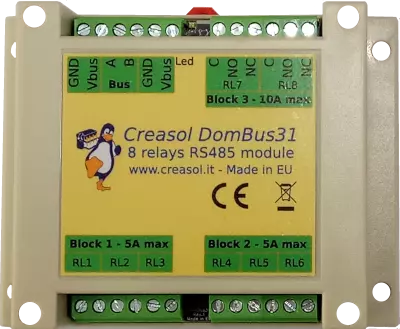
- 6x relays SPST 5A
- 2x relays STDT 10A
- Only 10mW power consumption with all relays OFF
- Only 500mW power consumption with all 8 relays ON !!
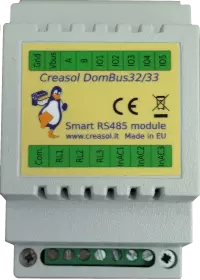
- 3x relays SPST 5A
- 3x 115/230Vac optoisolated inputs
- Single common for relays and AC inputs
- 5x general purpose I/O, each one configurable as analog/digital inputs, pushbutton, counter, temperature and distance sensor.

- 3x relays SPST 5A
- 3x 115/230Vac optoisolated inputs
- Single common for relays and AC inputs
- 5x general purpose I/O, each one configurable as analog/digital inputs, pushbutton, counter, temperature and distance sensor.
Each relay can toggle the existing step-relay, switching the light On/Off. The optoisolator monitors the light status. The 5 I/Os can be connected to pushbuttons to activate or deactivate one or all lights.
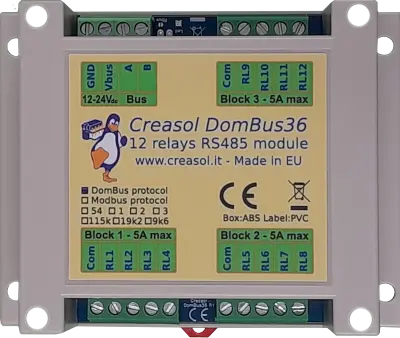
- 12x relays SPST 5A
- Relays are grouped in 3 blocks, with a single common per block, for easier wiring
- Only 12mW power consumption with all relays OFF
- Only 750mW power consumption with all 12 relays ON !!
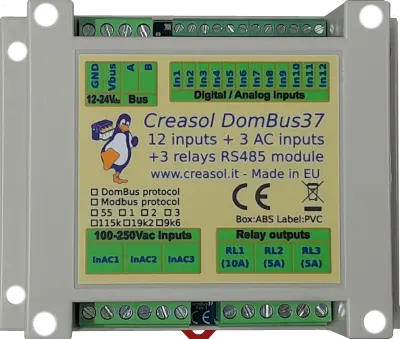
- 12x low voltage inputs (analog/digital inputs, buttons, alarm sensors, counters, temperature and distance sensors, ...)
- 3x 115/230Vac optoisolated inputs
- 2x relays SPST 5A
- 1x relay SPST 10A
- In12 port can be used to send power supply to an external siren, monitoring current consumption
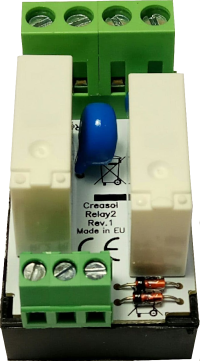
- 2x 5A 12V SPST relays (Normally Open contact)
- Overvoltage protection (for inductive loads, like motors)
- Overcurrent protection (for capacitive laods, like AC/DC power supply, LED bulbs, ...)
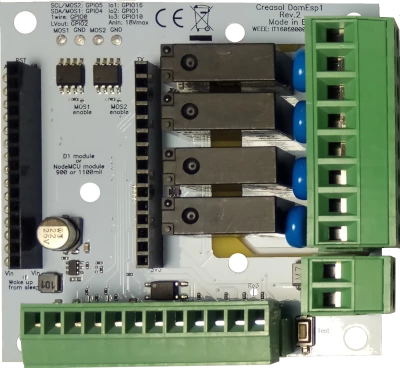
- 9-24V input voltage, with high efficiency DC/DC regulator with 5V output
- 4x SPST relays 5V with overvoltage protection
- 1x SSR output (max 40V output)
- 2x mosfet output (max 30V, 10A) for LED dimming or other DC loads
- 1x I²C interface for sensors, extended I/Os and more)
- 1x OneWire interface (DS18B20 or other 1wire sensors/devices)
